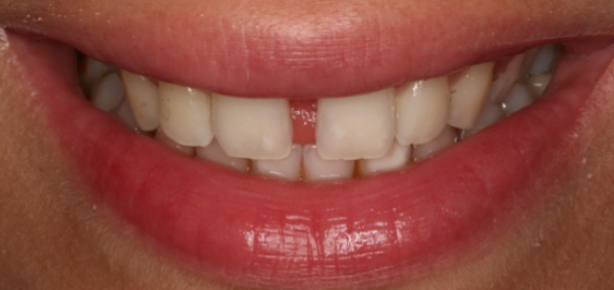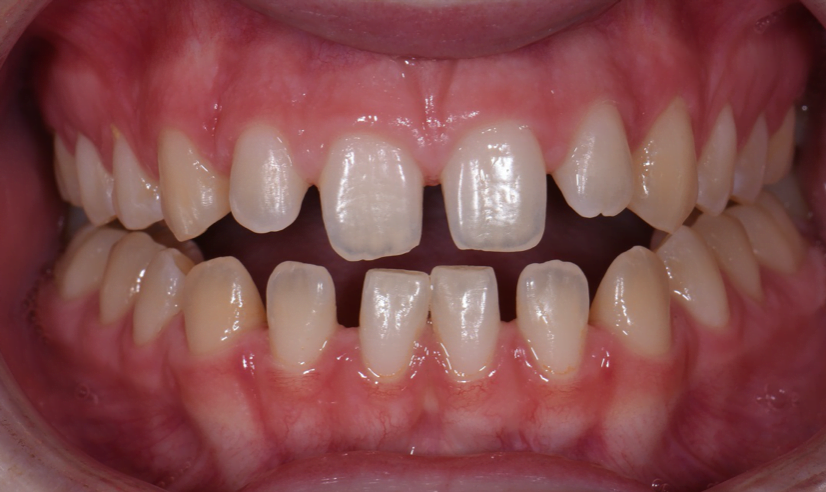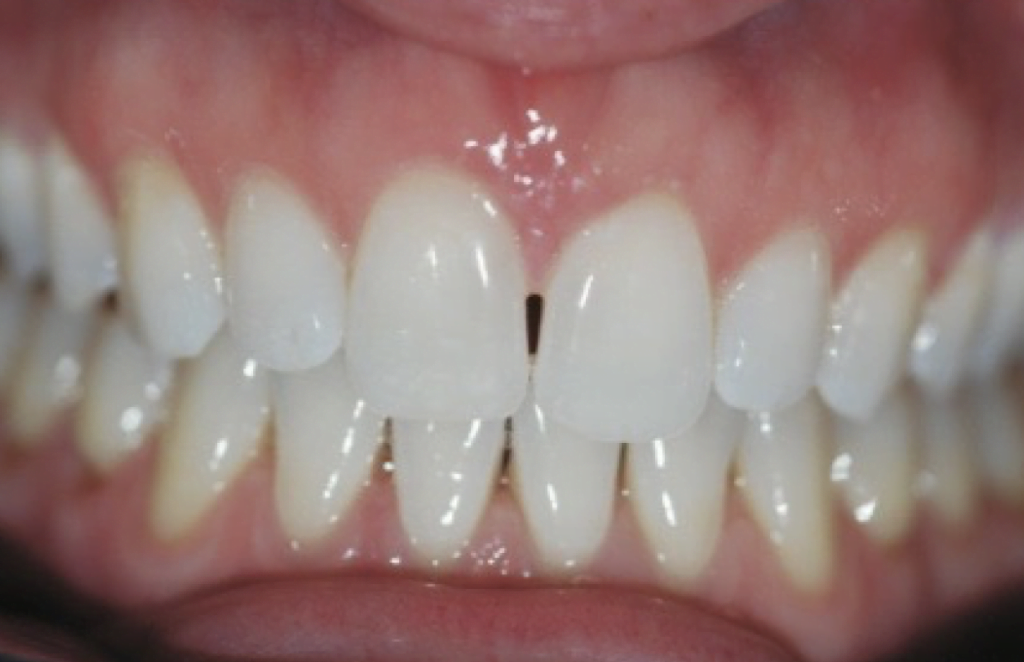
A midline diasetma or gap can be present for many reasons:
1 Small teeth or microdontia

2 Buried teeth

3 Pressure from the lip frenum pushing the teeth apart

4 Orthodontic pressure

Spaces can be corrected by either orthodontics, composite bonding or porcelain veneers. Sometimes if the gap is very large an implant crown can be placed.
Adding composite or porcelain veneers to teeth with spaces only really works if the teeth are narrow and not too far apart.
Composite bondings are thin sections of composite filling crafted by the dentist or the lab. They normally do not involve any tooth preparation. The downsides are that the bondings may not look translucent like real teeth, can be very thin and are prone to chip or debond and may stain.
Bondings may fail regularly. In order to overcome the strength issue some dentists place thicker bondings that ma make the teeth look bigger.

Porcelain veneers are made in the lab and always in most cases involve tooth preparation. The reduced tooth allows veneers to be bonded without being bulky. Tooth preparation is irreversible and veneers can start to fail after some 10 years or so. Gum shrinkage is one of the most common problems.
If the teeth are already normal or large in size then adding a wider bonding or veneer will make the teeth look even bigger.

If the spaces are small and the teeth are of a natural size, then bondings or veneers will help.
Invisalign or braces?

Invisalign aligners are work leaders in removable orthodontics.

Both systems will work but Invisalign is removable and virtually invisible.

An Invisalign case in point
We treated this young lady a few years ago with Invisalign. She had a moderately large diastema made worse by the lower incisor pushing on the teeth. Anyway we advised that Invisalign could bring the lower incisors back into line and the upper incisors brought together to close the gap.
The Invisalign aligners work on the front teeth first and so the gap closes first, but then you get gaps at the side, which close next. The last teeth to move are the molar teeth.
Treatment time is usually 12-15 months, but patients do not mind as the central gap closes first and also the aligners mask any other gaps.

At the end of treatment the gap is closed, but there is a tiny space owing to the shape of the teeth. On could have reshaped the teeth prior to the aligners, or added composite between the teeth, but the patient wanted neither. We provide Invisalign Vivera retainers afterwards.
Her father came in a few months later and started Invisalign.The funny thing was that one day the father was taking out his aligners at a restaurant and a customer asked what were they? He said Invisalign, gave our details and we got another new patient!